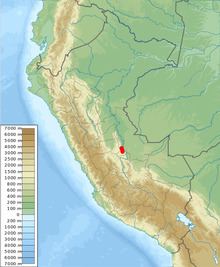Kingdom Animalia Family Capitonidae Genus Capito Order Piciformes | Class Aves Phylum Chordata Rank Species | |
 | ||
Similar Capito, Scarlet‑banded barbet, Five‑coloured barbet, Black‑girdled barbet, Scarlet‑crowned barbet | ||
The Sira barbet (Capito wallacei fitzpatricki) is a bird inhabiting the remote eastern Andes of Ucayali Department, Peru, that was discovered on a 2008 expedition. It occurs in genetic isolation due to the isolated geography of its home range along a ridge of montane cloud forest in the southern portion of the Cerros del Sira. Eight specimens were collected from the upper Río Shinipo and Río Tzipani valleys , and a further two at Quebrada Quirapokiari in July 2011.
It is usually considered a subspecies of the scarlet-banded barbet, although some taxonomists do place it as a distinct species. The Sira barbet is distinguished it by differences in morphology and plumage, particularly the color on the bird's flanks, lower back and thighs, and a wider, darker scarlet breast band. DNA sequencing was also used to confirm the Sira barbet's status as a distinct species.
Males are on average smaller than females, and lack the red and yellow scapular pigmentation. Their crown and flanks are also a more saturated red. They have a low-pitched purred song, but more commonly emit a Tityra-like grunt. Quiet, low-pitched groans and clucks are emitted from their roost cavities.
They occur in a narrow elevational zone around 1,100 m on moist ridges adjacent to the drier eastern lowlands, and are absent at 2,000 m. They frequent the highest stratum of tall (up to 30 m) montane forest with arboreal epiphytes and moss, above a sparsely vegetated understory. Its range is sympatric and syntopic with that of the gilded barbet, and coincides with the boundary and sections of the Sira Communal Reserve.
The bird's epithet commemorates John W. Fitzpatrick, an expert for the Peruan avifauna and director of the Cornell Lab of Ornithology.
